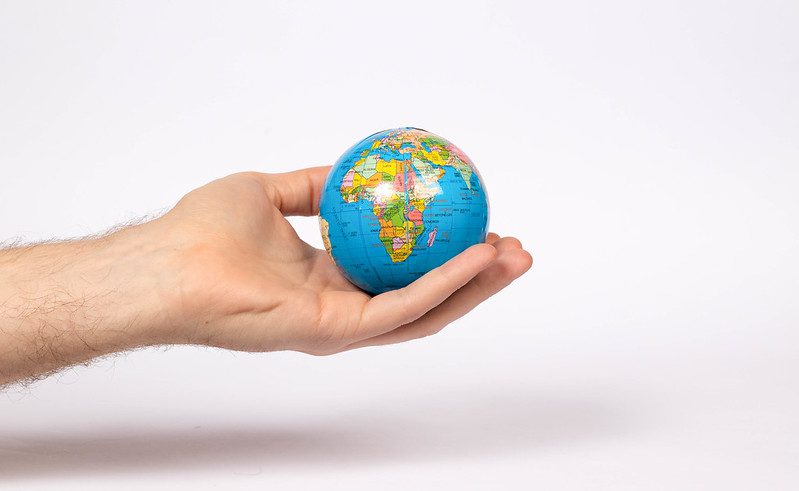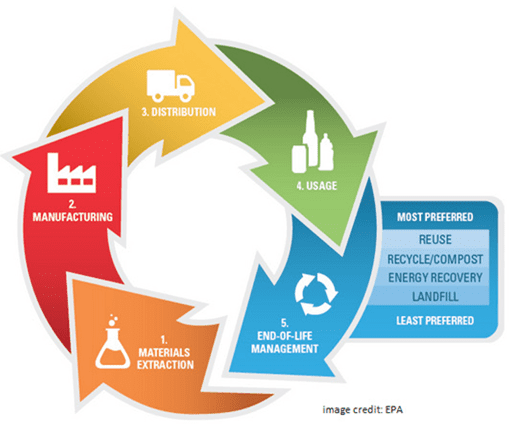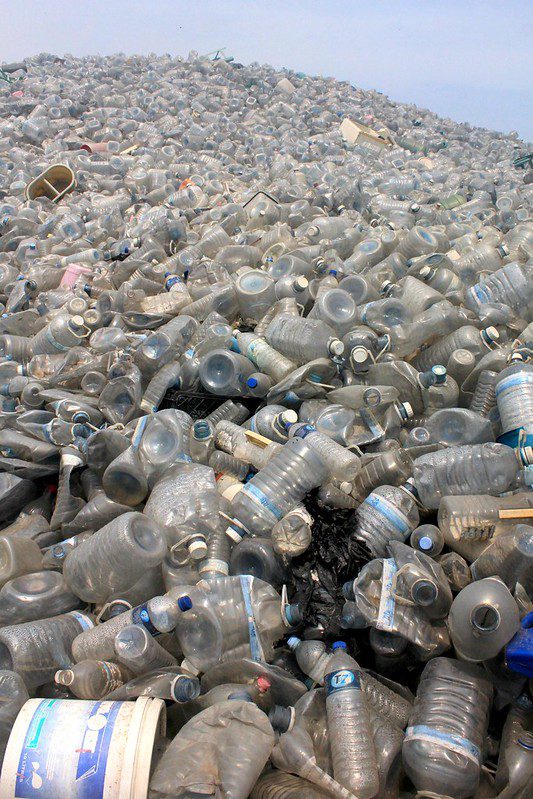As we continue to explore the Sustainable Development Goals, let’s take a look inward to see how small individual actions can lead to a bigger impact. The global population is growing and according to the United Nations it could take 3 planets to sustain our current lifestyles if the population reaches 9.6 billion in 2050. We only have one Earth so what can we do? A great place to start is with SDG 12: Responsible Consumption, which focuses on how we can produce and use products in a sustainable way.
Here are five easy ways that you can be a responsible consumer to help meet this global goal.
 1. Reduce and Reuse First, Then Recycle
1. Reduce and Reuse First, Then Recycle
Did you know that we produce 4.9 pounds of waste per person per day in the United States on average? Many of us don’t go beyond the goal of recycling. However, it is far better to reduce the purchases we make in the first place and to reuse items we already have. Reducing the items we buy or repurposing the items we already own saves energy that would be used in production and transportation processes and also reduces the number of items that end up in our landfills. Recycling is important but it should be the last step when a product reaches the end of its usable life cycle. There are a number of blogs and social media accounts on “upcycling” if you are looking for inspiration!
2. Cut Back on Single Use Plastics
Plastic is so present in our daily lives – it is hard to believe that 50 years ago this wasn’t the case. 300 million tons of plastic are produced each year and about half of it is single use plastic. The UN states that “our planet is choking on plastic” and with 1 million plastic water bottles being purchased every minute and 5 trillion plastic bags produced each year, it is easy to see how. Only 10 percent of plastic is recycled around the world and a lot of plastic is winding up in the ocean, disrupting ecosystems. One way individuals can combat single use plastics is to carry a reusable bag, straw, and water/coffee bottle when traveling and commuting. Carrying a reusable water bottle can keep approximately 156 single use plastic bottles out of the waste stream each year.
3. Buy Refurbished Electronics and Recycle Your Outdated Electronics Safely
Technology is so pervasive that many of us may feel like we need the newest technologies to keep up. But it is critical to consider how long we are keeping our electronics before we exchange them out for a newer device. In 2018 Americans were keeping their phones for about 2 years on average. When our phones reach the end of a usable life cycle, we need to consider how to properly dispose of our old electronics. Only 1.7 of the 7.3 kg of electronic waste generated on average annually per capita is disposed of properly. Recycling electronics not only helps dispose of harmful chemicals like mercury, lead and cadmium properly but also cuts back on the need for extracting more raw materials like gold, copper and aluminum from the environment. (If recycled properly, these materials can be reused in the production of new electronics.)
 4. Research the Life Cycle of Products Before You Buy Them
4. Research the Life Cycle of Products Before You Buy Them
There is a lot more than what meets the eye when considering the environmental impact of a product. Before you buy something, think about what resources were used to make that item, how they were extracted, and how the item was produced and distributed. Finally, consider how long the item is likely to last and what will happen when it needs to be disposed of. For example, buying clothing made out of natural materials that can break down in weeks would be a more eco-conscious choice than purchasing items made from synthetic fibers which could take over 200 years to decompose. Sustainable brands often share what goes into making their products, support in repairing products to extend their life, and also provide options for proper recycling.
Check out our Secret Life of Stuff Lesson to dive deeper into the life cycles of the products we buy and own.
5. Meal Plan and Incorporate Plant-based Meals for a More Sustainable Diet
1.3 billion tons of food goes to waste globally every year and over 1/3 of the food we purchase in the U.S. is thrown away. The EPA lists some strategies for cutting back on food waste including meal planning for the week, buying in bulk only if you have a plan for those items before they spoil, and storing food items properly to extend their shelf life at home. You can also purchase imperfect produce to reduce the amount of food that is thrown away before it reaches people’s homes. Finally, incorporating more plant-based meals into your diet can have a positive impact on the environment. Livestock contribute to 14.5% of our greenhouse gas emissions, use 1/3 of our freshwater supply, and take up to almost 80% of the agricultural land. If you went meatless for all three meals, one day a week it would decrease your carbon footprint by 8 lbs and save nearly 400 gallons of water each week.
There are many other ways that we can decrease our consumption as individuals – this list is just a starting point. And keep in mind that in order to achieve Sustainable Development Goal – 12 corporations need to do their part, too. But our individual actions and purchasing power can help hold corporations accountable so that they follow through with sustainable consumption and production patterns. Together, we can inch closer to achieving this important global goal.
Image credits: Earth model (Planet earth in hand by Marco Verch Professional Photographer is licensed under CC BY 2.0); Plastic (Mountain of plastic bottles by Shafiu Hussain is licensed under CC BY 2.0); Life cycle of a product graphic (EPA)



